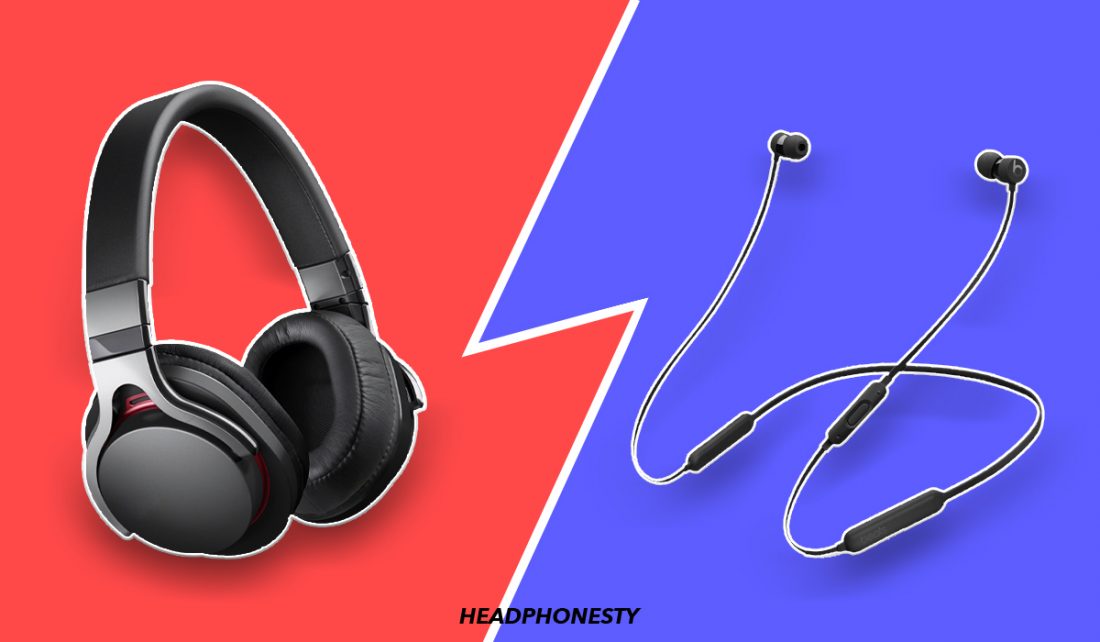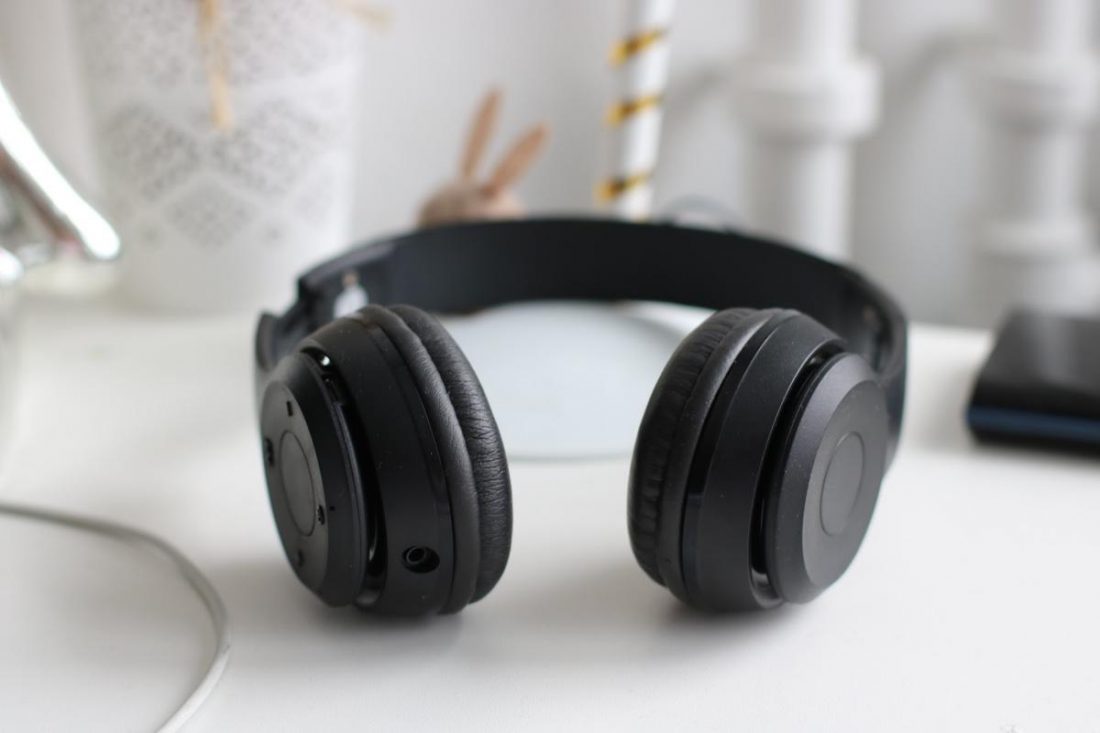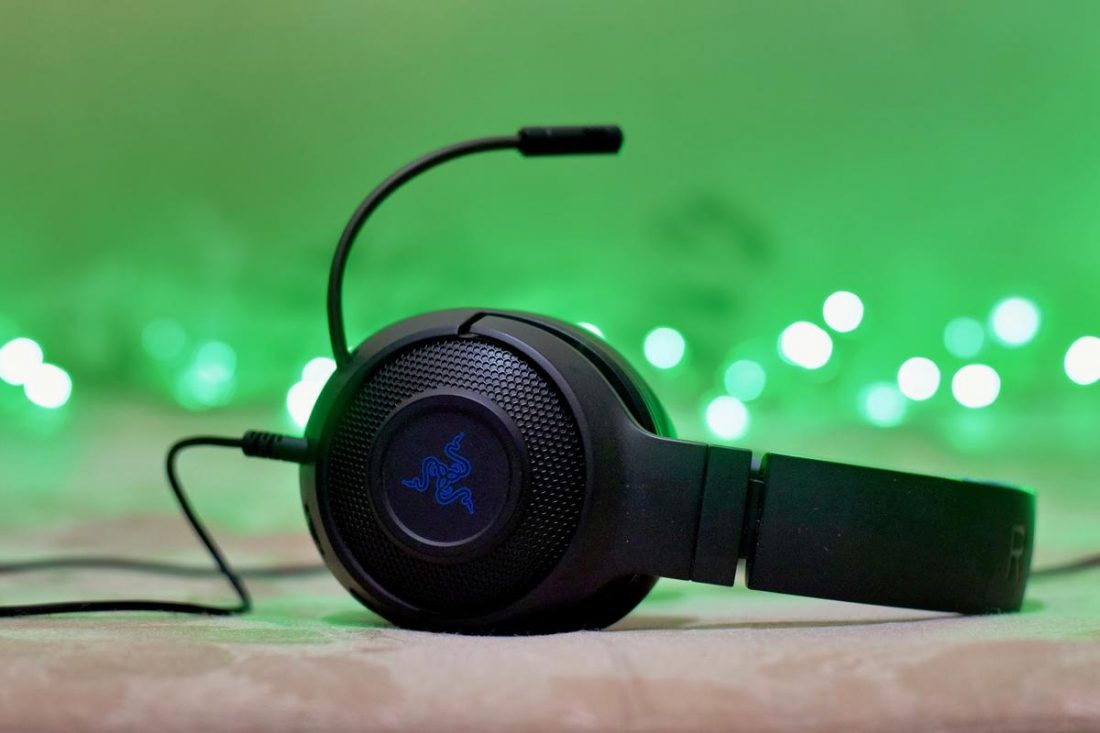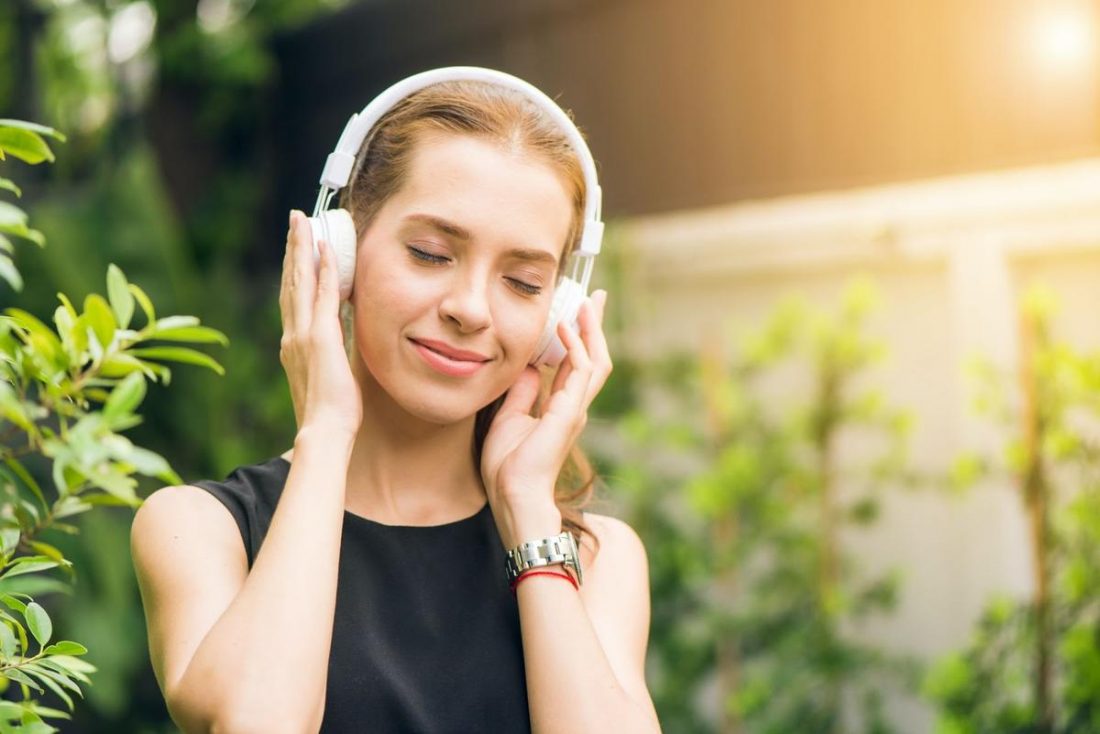If you’re in the market for something to satisfy your audio needs, you may be wondering whether or not headphones or earbuds are the right choice for you. After all, what’s the difference? For some, it would seem they serve the same purpose anyway. On top of trying to decide between earbuds and headphones, it’s easy to find yourself overwhelmed by the many different brands out there and what they have to offer in terms of features and design. In this article, we’re going to break down what headphones and earbuds are, as well as the differences between them to help you make an informed decision.
What Are Headphones?
Headphones are two small loudspeakers connected by a band. They’re worn over the top of the head, resting on or over your ears. Their purpose is to allow a single person to listen to an audio source privately. Each pair of headphones may look different, but their general make-up is the same. Headphones generally come with two necessary choices: on-ear or over-ear and open-back or closed-back.
Over-ear headphones
Over-ear headphones (also known as circumaural headphones) have large earpads that surround the ears rather than rest on them. They also often come with extra padding on the headband for comfort. However, due to their size and weight, they can be quite cumbersome when on-the-go. These types of headphones are good for sealing against the head to help with noise isolation.
On-ear headphones
On-ear headphones (also known as supra-aural headphones) are designed to rest on your ears rather than around them. Thanks to their small design, on-ear headphones are generally lighter than over-ear headphones. However, you may experience discomfort over long periods of listening. This is due to the pressure of the headphones resting on your ears. Because they rest on the ears, they are more susceptible to sound intrusion from the outside. This also means that loud audio can leak outside the headphones.
Closed-back vs open-back headphones
Along with making the choice between on-ear or over-ear, you need to decide on whether you want closed-back or open-back headphones. Let’s take a brief look at the differences between the two.
Closed-back headphones are headphones that have a solid enclosure on the outer shell. This enclosure keeps audio inside the headphones, directing it straight to your ears. The closed design also helps trap bass tones.
Open-back headphones have a breathable design on the outer shell. This helps with airflow and ensures your ears don’t sweat. It also helps create a more natural sound, as it eliminates small echoes. Due to their open design, however, noise isolation becomes a problem as there is no seal to keep sound in.
The majority of headphones on the market are over-ear, closed-back headphones. However, preference is everything. It’s recommended that you try out a few different types of headphones to find a pair that works for you.
Headphones vs headsets
Headphones look like headsets in terms of design. The only big difference is the microphone. Just like headphones, headsets can come wired or wireless. They have a microphone attached directly to them. And, depending on the type, the microphone may be detachable. Depending on your needs, a headset might be the better option for you. Headsets are used when you need to use headphones, as well as a microphone. They’re a cheaper (and less bulky) alternative to using headphones with an external mic.
What Are Earbuds?
Earbuds are two compact devices, each with its own driver. They fit either directly into the ear or rest on the inner part of the ear. They can connect to audio devices either through cable or by wireless connection, depending on the model. Their small form factor means they’re unmatched in terms of portability. In terms of audio quality, headphones outperform earbuds at the same price point. Design plays a big part in this, as earbuds have much less space for internal components. For some, earbuds can also be uncomfortable, depending on how they fit your ear. There are two types of earbuds: in-ear monitors (IEMs) and standard earbuds. In addition to this, they can appear in one of these three different connection types:
Wired – Both earbuds are connected via a cable that plugs directly into an audio source. Wireless – Both earbuds are connected via a cable to each other but connect to an audio source wirelessly. True Wireless – The earbuds connect to each other and the audio source wirelessly.
Differences Between Headphones and Earbuds
Headphones and earbuds each have their strong points. To make a decision on which to buy, you need to first know what you want out of them.
Sound quality
One of the most important factors to consider is sound quality. Crisp, clear audio is something that everybody wants. Poor sound quality is undoubtedly noticeable in any listening scenario. It’s hard to compare headphones and earbuds in terms of quality because it’s dependent on the model. Both headphones and earbuds feature models that can outperform the other, but at the same price point, headphones will usually perform better.
Portability
Depending on your lifestyle, portability can be a deciding factor. If you plan to carry the headphones or earbuds with you regularly, they need to be small and lightweight. Both headphones and earbuds can be used on-the-go. However, headphones can become tiresome to carry and wear due to their size and weight. Earbuds, on the other hand, have been designed with portability in mind.
Noise isolation
Noise isolation measures how well the headphones or earbuds can block outside noise. The better noise isolation you have, the less you can hear the noise outside of your headphones. Standard earbuds and on-ear headphones are considered the worst for noise isolation. Their design prevents them from sealing against your ears to stop outside noise.
Comfort
When it comes to using headphones and earbuds, comfort is a major factor. Nobody wants to be uncomfortable when listening to music. If comfort is your priority, it’s mostly recommended to go for over-ear headphones. This is because they rest on or around the ears rather than inside them. While some over-ear headphones can still put pressure on your ears, their ear pads and headband have foam to help reduce it. However, you should also take the headphones’ padding material into consideration and whether or not it offers ample breathability.
Safety
Technically speaking, headphones and earbuds are both safe, but this can change depending on how you use them. Listening at high volumes for long periods of time can cause damage to your ears. This is true for both headphones and earphones. However, due to their design, the risk is somewhat higher for earvuds. Standard earbuds transmit audio directly into your ear, which IEMs sit even closer to your ear canals. Because of this, they can cause more damage at higher volumes.
Price
Price can be pretty consistent with both headphones and earbuds. Each type has models that are on the opposite ends of the spectrum. It really depends on the model, but earbuds are usually cheaper because of their size and the amount of materials used to make them.
Headphones vs. Earbuds: Which Should You Go For?
The big question. Ultimately, the choice between headphones and earbuds is dependent on your lifestyle and personal preference. To help you, here are some suggestions on what can work great for each situation.
For kids
As kids’ eardrums are still developing at a young age, headphones are advised as they’re further away from the delicate structures of the inner ear. Even then, what’s more important is ensuring that volume levels sit at 82 decibels or below, as anything above 85 decibels is considered harmful. For a list of the most recommended headphones for kids, head out to our buyers’ guide for the best kids’ headphones.
For working out
Listening to music while exercising can help get you into the zone. True wireless earbuds can be your best choice. They’re lightweight and wireless so you don’t have to worry about cables restricting your movement or tugging on your clothing. Looking for headphones for working out? Feel free to check out our list of the top wireless workout headphones!
For air travel
Flights can be long, and oftentimes tirelessly so. To get you through, you can’t go wrong with a pair of noise cancelling headphones for travel. Headphones are more comfortable for extended wear thanks to the padding. In addition to comfort, you also have noise cancellation. Add the noise cancellation, which is a feature that actively blocks outside noise. And you can be sure to experience a more relaxing trip, whether you go by train, or by air. No more loud engine noise!
For audio mixing and recording
A good pair of closed-back monitor headphones are important when recording. They offer great noise isolation. Monitor headphones are professional-grade headphones that allow you to distinguish each instrument. This helps musicians monitor as they play. It also stops sound bleeding into live mics which would otherwise ruin any recording. On the other hand, for mixing, open-back headphones are better due to their ability to offer more natural sound at the cost of noise isolation. You’ll have to make sure that you’re mixing in a quiet environment when using open-back headphones, though.
For commuting
For those that have to commute to work or school, earbuds are a very popular choice thanks to their compact and lightweight design. Headphones will work as well, but they aren’t recommended due to their large size and weight.
For offices and online classes
Both headphones and earbuds are great for use in offices and online classes. The decision will heavily depend on personal preference. In professional environments, headsets are the preferred choice because of their included microphone.
For bass lovers
Bass is best experienced through over-ear closed-back headphones with large drivers. Large drivers are better at producing deeper bass. This is complemented by the closed-back design, as it stops bass from escaping.
For gaming
Gaming is all about performance. To ensure you’re performing at your best, a good pair of headphones is essential. For long sessions, over-ear headphones are better for comfort.
Conclusion
Deciding between headphones and earbuds can be a daunting task. Now that you know their differences, you can make an informed decision confidently. What’s the key factor you consider when shopping for some new headphones? Let us know in the comments below!








